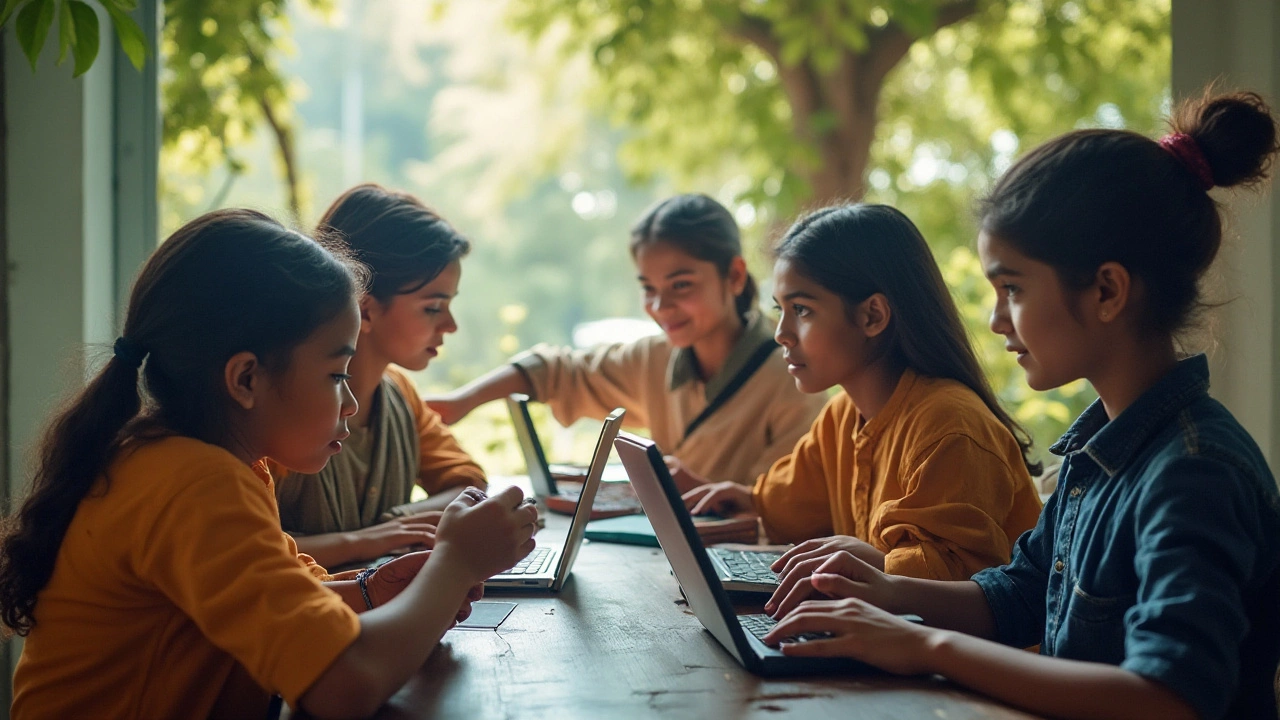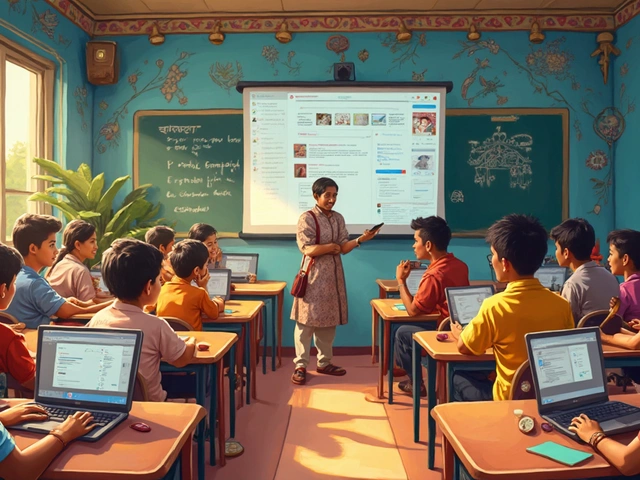The term 'distance education' might sound like a buzzword of the digital age, but its roots trace back over a century. With the rapid advancement of technology, it has evolved into a sophisticated and accessible method of learning that millions around the world increasingly rely upon.
Distance education refers to any educational process where the instructor and the student are not present in the same physical space. This form of education allows teaching to transcend traditional geographical limitations, providing opportunities for students who might otherwise be excluded by their location, personal commitments, or work schedules.
- The Evolution of Distance Education
- Key Benefits and Opportunities
- Challenges and Considerations
- Future Trends in Distance Learning
The Evolution of Distance Education
Distance education has a rich history that goes back much earlier than many would expect. Imagine the year 1840, when the concept first took root with the launch of the first documented correspondence courses initiated by Sir Isaac Pitman in England. His inventive use of the postal system to send shorthand lessons marked the dawn of a new educational era, inspiring progressive minds across continents to consider the untethered potential of learning remotely. Over the decades, early adopters saw immense promise in this model, recognizing it as a lifeline for students in rural or isolated communities eager for knowledge.
As the 20th century unfolded, innovations began to fuel the growth of distance education. The invention of radio and television introduced new mediums of instruction. By the 1930s, radio courses delivered learning snippets to homes, while the 1950s saw instructional television programs captivate audiences, making education an entertaining endeavor. This was an era where curiosity transcended traditional classroom walls, paving pathways for future advancements. In fact, institutions like the University of London led the charge by formally offering external degree programs, democratizing education on a global scale.
The latter half of the 20th century marked significant strides with the rise of the Internet, heralding the age of online learning. Pioneers in the field harnessed the power of digital connectivity to create Massive Open Online Courses (MOOCs), platforms where thousands could learn simultaneously. Pioneering institutions like MIT and Stanford University offered courses online, reaching students worldwide and redefining academic boundaries. As these platforms grew in popularity, their capacity to offer interactive, multimedia-rich content diversified, enhancing the distance education experience further.
"Nothing has transformed the realm of distance education quite like the digital revolution," notes educational technologist Dr. Emily Gardner. "With technology, the spectrum of learning has expanded beyond textbooks to immersive experiences."
Fast forward to today, and technology-driven innovations such as virtual reality, artificial intelligence, and mobile learning apps are propelling distance education into realms previously only dreamed of. Students can engage in virtual classrooms, collaborate on projects in digital spaces, and access resources with unprecedented ease and accessibility. This isn't just about replacing in-person learning; it's about enhancing education so that it meets the diverse needs of a growing global populace.
The journey of distance education is a testament to human ingenuity and adaptability, unveiling a future ripe with endless possibilities. With each technological leap, we move closer to a learning ecosystem that's inclusive and tailored to individual needs, a testament to education's enduring evolution.

Key Benefits and Opportunities
As the landscape of education continues to expand and diversify, the realm of distance education presents a unique array of benefits that cater to the needs of students and educators alike. One of the most significant advantages of distance learning is its unparalleled flexibility. Students can access learning materials, participate in discussions, and complete coursework at their own pace and on their own schedule. This flexibility is particularly beneficial for working professionals or those with familial responsibilities, allowing them to balance their educational pursuits with other commitments effectively. The ability to create a personalized learning environment, free from the constraints of a traditional classroom schedule, encourages autonomy and discipline, fostering skills that are invaluable in both educational and professional settings.
Distance education also opens doors to a wealth of educational resources and global experts that would be otherwise inaccessible in a conventional classroom setup. Through online learning platforms, students can enroll in courses offered by prestigious institutions across the globe, gaining insights and knowledge from a diverse array of voices and perspectives. This access to a broader academic community can enrich the learning experience, offering additional perspectives and new opportunities for collaboration and intellectual growth. Moreover, the integration of multimedia tools—such as video lectures, interactive simulations, and digital libraries—enhances comprehension and caters to different learning styles, making education more engaging and effective.
The technological infrastructure of digital classrooms also plays a pivotal role in shaping the distance education experience, providing an environment ripe for innovation. Modern learning management systems (LMS) offer a suite of features designed to improve the teaching and learning process. These platforms facilitate streamlined communication, allowing instructors to give timely feedback and engage with students in a more direct and personal manner. There is a growing body of research indicating that the use of digital tools can lead to improved student outcomes and higher satisfaction rates. According to a study conducted by the Babson Survey Research Group, more than six million students in the United States were enrolled in at least one online course as of 2021, and the numbers have only continued to grow since then.
"Distance education offers learners flexibility and access to a vast range of learning resources, facilitating a personalized education journey," notes Dr. Emma Collins, a noted education technology researcher.
One of the understated opportunities nestled within the realm of remote education is the potential for environmental sustainability. By reducing the need for physical commuting and minimizing the use of printed materials, distance learning can significantly lower the carbon footprint associated with traditional educational models. This transition not only aligns with ecological sustainability goals but also translates to financial savings for students and institutions alike. These financial considerations often underscore an attractive dimension of distance learning, as it can provide a more cost-effective alternative to traditional education, especially when factoring in costs like housing, transportation, and on-campus amenities.
Yet, while the benefits are plentiful, it is the balanced integration of these opportunities into the holistic educational experience that matters most. Educational institutions are increasingly embracing hybrid models, combining remote education with traditional approaches to harness the best of both worlds. These blended strategies aim to enhance student engagement, maintain the social aspects of learning, and prepare students for a rapidly evolving workforce. As technology continues to evolve, so too will the opportunities within distance education, offering an ever-expanding horizon for learners worldwide. Embracing these opportunities responsibly will ensure that distance education remains a vital and dynamic component of the global educational ecosystem.

Challenges and Considerations
Embarking on the journey of distance education brings its own set of unique challenges and considerations. One of the most pressing issues is the need for reliable and consistent internet access. While urban areas often boast high-speed connectivity, rural and underprivileged regions may find it harder to maintain a stable connection, creating a digital divide that can hinder learning opportunities. This divide is not just a technical issue but a socio-economic challenge that needs addressing to foster equal educational opportunities for all.
Another challenge lies in the requirement for self-discipline. Unlike the traditional classroom setting where the presence of peers and instructors fosters an environment of accountability, online learning places the onus of time management and motivation on the learner. Many students may struggle with procrastination or lack the structure needed to maintain consistent study habits. To combat this, educators are exploring innovative ways to engage students, such as gamified content and interactive platforms that can hold attention and incentivize progress.
According to Dr. Jane Smythe, a pioneer in digital education, "Developing self-regulation skills is critical for success in remote education. Without these skills, learners may find themselves overwhelmed or disengaged."
Engagement can also be a significant hurdle. In physical classrooms, the dynamics and energy of face-to-face interactions can stimulate discussions and debates that enrich learning. However, translating this experience into digital classrooms requires deliberate effort and creativity. Educators are experimenting with virtual breakout rooms, live polls, and moderated forums to encourage participation.
Assessing student performance presents another layer of complexity. Traditional exams and assessments may not translate well into an online format due to concerns about integrity and fairness. Adaptive testing and AI-driven assessments are emerging solutions that personalize the testing process, allowing students to demonstrate their understanding in diverse ways while maintaining academic standards.
Moreover, it's vital to consider the psychological impact of prolonged screen time. The fatigue associated with hours spent in front of a monitor, often referred to as 'Zoom fatigue,' is a legitimate concern. It necessitates regular breaks and awareness of mental health, both from educational institutions and learners themselves. Integrating health tips and workshops about balancing digital and offline life is becoming an important part of the curriculum.
Distance education is rapidly evolving, and so is the requirement from educators to stay updated with technological advances and pedagogical strategies. Institutions must invest in training programs for instructors, ensuring they are equipped to provide engaging and effective digital learning experiences. This continuous learning not only benefits the educators but also enhances the overall quality and reputation of the courses delivered.

Future Trends in Distance Learning
As technology continues to evolve at a staggering pace, the future of distance education is set to become even more dynamic and versatile. One cannot ignore the impact that advances like artificial intelligence, augmented reality, and immersive digital environments are having on how educational content is delivered and consumed. These innovations are not just creating new teaching tools but are fundamentally changing the educational experience, making it more interactive and tailored to individual learner needs. Imagine a classroom where lessons adapt in real time to each student's pace, ensuring no one gets left behind and everyone is engaged at their level.
In particular, AI-powered systems are expected to play a significant role in personalizing online learning. These systems can analyze data from student interactions to offer personalized content recommendations, suggest specific learning paths, and even identify areas where a student might be struggling. This level of customization helps in catering to diverse learning styles and preferences, making remote education more effective. Schools and educational platforms are investing heavily in such technologies, indicating a growing recognition of their potential. According to a recent study, the global market for AI in education is projected to reach $25 billion by 2030, highlighting its anticipated widespread adoption.
Moreover, augmented reality (AR) and virtual reality (VR) bring a new dimension to digital classrooms. By offering immersive experiences, these technologies help students understand complex concepts by visualizing them in three dimensions. Imagine studying the intricacies of the solar system not through a textbook, but by virtually navigating through planets themselves. This hands-on learning approach not only enhances comprehension but also stimulates interest, encouraging students to explore further. According to an education specialist quoted in "Education Technology Magazine,"
"The era of virtual reality in education will soon take students beyond the confines of traditional teaching and offer exploratory experiences that were unimaginable before."
Another trend worth noting is the increasing integration of blockchain technology in distance education systems. As educational institutions turn increasingly digital, blockchain offers a way to securely store and verify academic records, making them tamper-proof and easily accessible. This not only simplifies enrollment processes but also ensures transparency in credential verification. It holds particular importance in an era where academic fraud is a growing concern. Furthermore, micro-credentialing, supported by blockchain, allows learners to accrue smaller, skill-based credentials that can be combined into larger qualifications, giving professionals a flexible route to academic advancement.
Furthermore, the concept of lifelong learning is set to become more ingrained in society, facilitated by online learning platforms that offer courses to suit every need—from degrees to hobbyist classes. As job markets continue to evolve with technological progress, individuals must continuously reskill and upskill. Distance learning platforms make this transition smoother, providing flexible learning options that fit into people’s busy lives. The rise of Massive Open Online Courses (MOOCs) is a testament to this shift, making high-quality education accessible to anyone with an internet connection.





